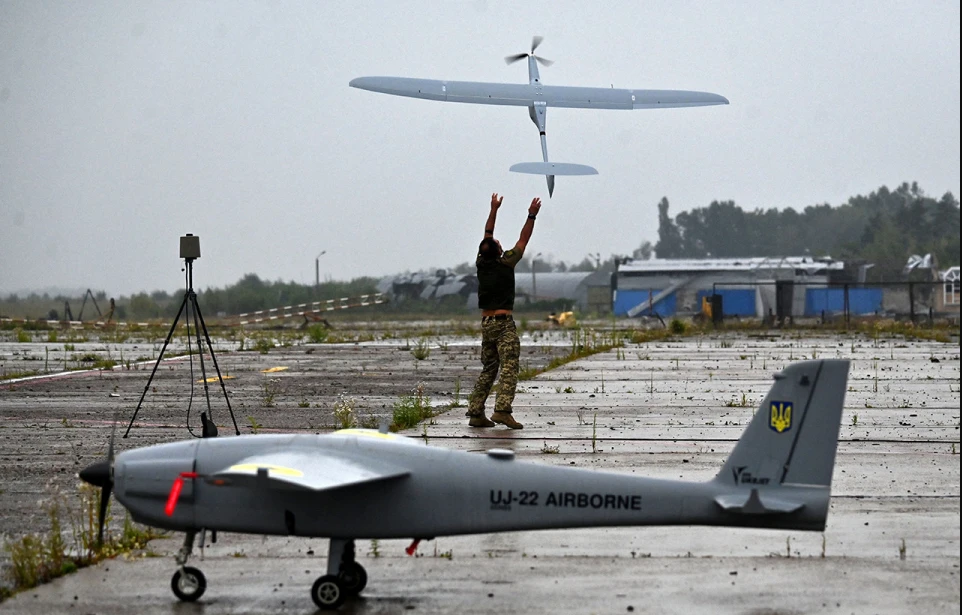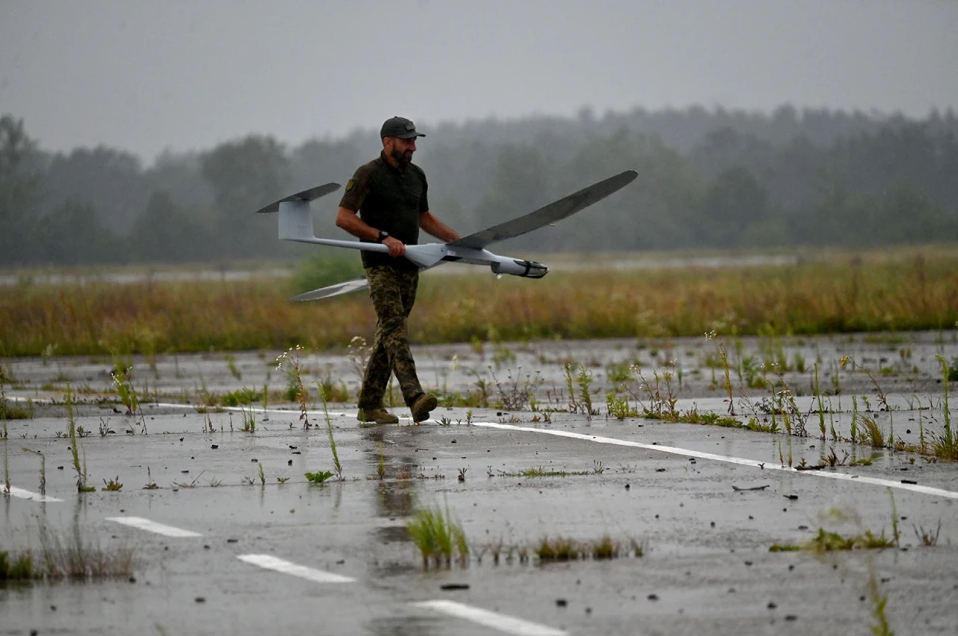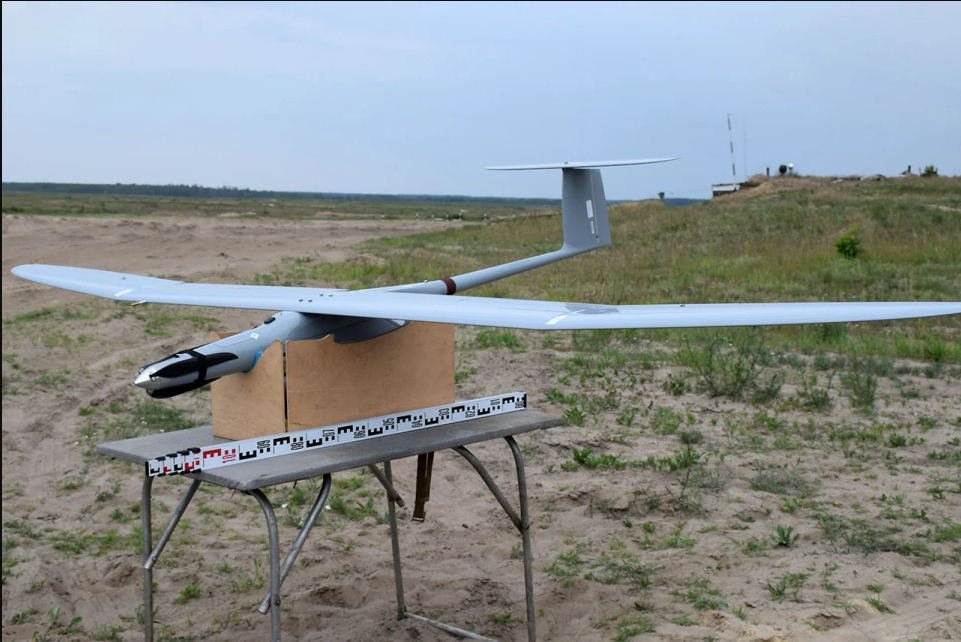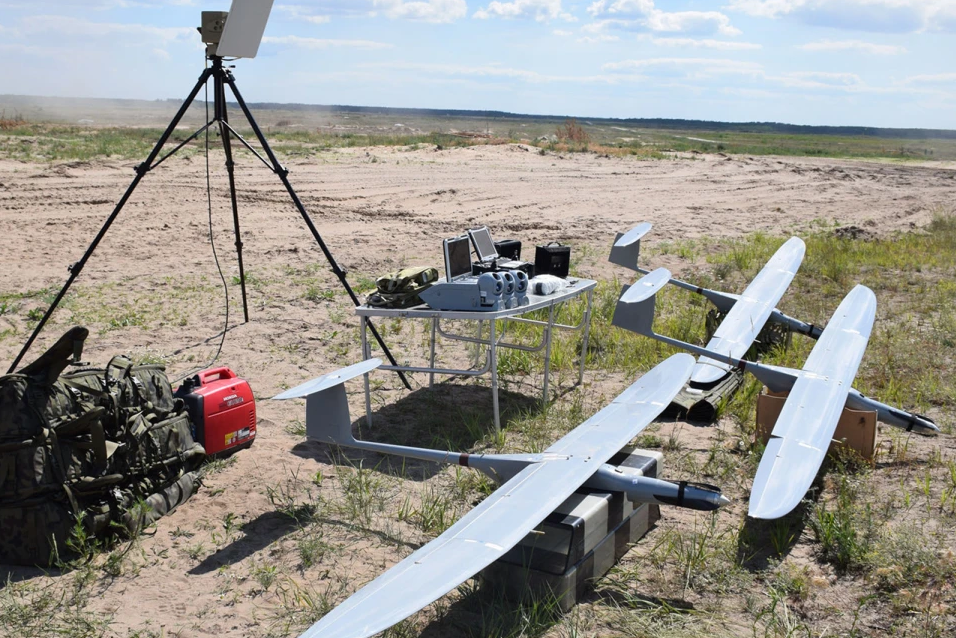FlyEye drone and what we know about its features
“Mavic,” “bayraktar” or FPV are words familiar to even children in Ukraine. Experts emphasize the importance of the number and quality of drones for either side to gain an advantage on the frontline. Among the drones in the Armed Forces’ arsenal, the Polish FlyEye is one of the best reconnaissance drones that can increase the effectiveness of artillery fivefold.
We are talking about the first unmanned aircraft system adopted by the Armed Forces of Ukraine, its technical characteristics and peculiarities of its use at the front.
The FlyEye unmanned aerial vehicle was developed by FlyEye and created by engineers from Flytronic (owned by WB Electronics). It was first presented to the public in the summer of 2010 at an exhibition in Paris.
Already in October 2010, FlyEye was used to search for a missing child in Augustów County. In 2013, an agreement was signed to supply 12 sets of FlyEye unmanned aerial vehicles to the Polish army. A year later, FlyEye won a tender for mini unmanned aerial vehicles for the Polish border guard.

Soon after, Flying Eye came to Ukraine. The Polish WB Group became the first foreign company to supply equipment to the Ukrainian military after the Russian aggression in 2014. FlyEye has been in use in Ukraine since 2015, and in 2017 it became the first unmanned aerial system to be adopted by the Armed Forces of Ukraine. The order was signed by the then Minister of Defense Stepan Poltorak.
Defense Express military expert Valeriy Ryabykh noted that during operation in the Donbas combat zone, FlyEye proved to be “a high-quality and very effective unmanned aerial vehicle with a large margin of safety and fault tolerance.” In particular, as of 2021, not a single airframe has been lost in combat conditions during the ATO and JFO (more than 3,500 flight hours) during the first 5 years of operation of the FlyEye 2.0 UAV.
In addition to its use in the ATO/JFO area, the “flying eye” was used, for example, by the National Guard to detect fires or saboteurs in the Chornobyl exclusion zone. At the time, representatives of the National Guard noted that FlyEye, thanks to its thermal imaging camera, is best suited for detecting fires, as it can “see” despite high levels of smoke.
In 2020, FlyEye became the first Polish system to be offered by the NATO Maintenance and Supply Agency (NSPA). At that time, the Agency highly appreciated the quality of Polish drones. Polish Special Forces used FlyEye during combat missions in Afghanistan.
What is FlyEye and how does it work?
The FlyEye unmanned aerial vehicle system consists of a ground control station, a data analysis station, an antenna, and a drone. It is designed to monitor the battlefield, adjust artillery fire, relay signals, patrol borders, etc.
The body of the FlyEye drone is made of composite materials with a high plan view. There is a folding propeller in the nose, and the payload is located under the hull near the center of mass.
“With a takeoff weight of 11 kg, the FlyEye can be prepared for takeoff and folded after landing in less than ten minutes. The launch itself is automatic, and the UAV is released from the operator’s hands. No additional equipment such as a launcher or pneumatic catapult is required. This significantly reduces the weight of the system, which can be transported in two hiking backpacks. The FlyEye drone can be launched from almost any location, even from the deck of a small ship,” Army-Inform reports.

The flight can be controlled manually via the control post if the range is up to 30 km. Another option is to fly automatically on a pre-programmed route, with the ability to adjust it manually during the flight.
FlyEye flies extremely quietly, as the drone is mostly planning and has an electric motor. Our intelligence officers call this drone an “invisible aircraft”.
“It is difficult to detect it, because its “brains” contain certain algorithms, radio electronic technologies that are still unknown to the orcs.”
If the enemy uses electronic warfare, the drone switches to radio silence, performing tasks along a pre-programmed route. If the connection with the ground station is lost, FlyEye automatically returns to the set point or start location.
The reconnaissance equipment is located in the central fuselage compartment. The Fly Eye is 1.9 meters long and has a takeoff weight of 11 kg (4 kg payload). The device climbs 4 km in height and reaches speeds of up to 120 km/h.
Before landing, the payload is dropped by parachute, and the airframe barrels to a predetermined landing site. The flight lasts up to three hours.
FlyEye technical specifications
- The wingspan is 3.6 meters,
- The length is 1.8 meters,
- The takeoff weight is 12 kg,
- The payload is up to 4 kg,
- The speed is 60-120 km/h,
- The practical ceiling is 3.5-4 km,
- The radius of application is up to 300 km (with radio communication – up to 50 km),
- The maximum flight duration is up to 3 hours,
Military about FlyEye
Colonel Taras Potyagach headed the test commission before the Ukrainian Armed Forces adopted the Polish system. He noted that the commission was closely monitoring foreign drones of this class. “Flying Eye turned out to be the best of them all.
“We were guided by the fact that this drone has the proper tactical and technical characteristics and that it has been adopted by NATO member states. It has digital data transmission channels that reproduce high-resolution images, which makes it possible not only to identify the type of military equipment, but also to determine its modification. For example, that it is not just a tank, but a T-64BV or T-72B3.
Potyach emphasized that the daytime camera and thermal imager allow FlyEye to operate at any time of the day, as well as in low visibility conditions. The thermal imager makes it easy to adjust artillery fire, as the places where ammunition explodes are clearly visible. The laser rangefinder helps you determine the exact distance to each object.
In a video on the Military Television of Ukraine, the SBU CI told how during one of the operations, FlyEye was used to successfully reconnoiter positions and detect concentrations of enemy manpower and equipment, including a Tor anti-aircraft missile system. The most important thing, he said, is to organize a safe place for UAV operators.
“The safety of the unit is paramount. First of all, we need to ensure a secure location to prevent the enemy from detecting our positions from the air, as well as to take camouflage measures to make it harder for the enemy to find us.”
Defense Express provides an assessment of the system by a serviceman with the call sign “Google” who served as a crew member of the FlyEye UAV of the artillery brigade.
“The complex we had in service accumulated more than 700 flight hours in a few months of combat operation and scouted more than 1,000 single and group targets,” the soldier says.

In particular, he highlighted such strengths of the Polish drone as a secure digital radio channel, gliding flight (the engine runs only 25% of the time), the ability to operate under the influence of electronic warfare and in stormy weather conditions, and others.
“Google emphasizes that most of the “mechanical functions,” such as takeoff and landing, are transferred to the autopilot. This eliminates the human error factor.
“The device is convenient and effective in escorting moving targets, as well as in searching for single objects in urban areas and deciduous green forests in barrage mode. We should also note the ability of FlyEye to fly and at the same time ensure the fulfillment of tasks in strong winds of up to 18 m/s. None of our other UAVs of this class can operate in such conditions,” the military said.

New versions of FlyEye are already in service in the Armed Forces of Ukraine
The FlyEye developers used all the experience gained at the frontline in Ukraine to improve their product. Thus, in 2021, the manufacturer began to release FlyEye 3.0 with improved tactical and technical characteristics.
A number of useful features have been added to FlyEye 3.0. For example, real-time video transmission and playback, autonomous flight and automatic landing, and others. It is planned to use a small-sized tactical antenna, which makes it possible to transfer control to a special forces group in the immediate area of the UAV’s barricade. This will allow you to control the drone in full radio silence mode.
FlyEye 3.0 is equipped with the new GS4 surveillance head. It uses cameras with improved performance and advanced image management and processing algorithms. High-quality images allow you to identify objects from a distance of 5-7 km at any time of the day or night and in adverse weather conditions.
In August 2022, as part of the Army of Drones project, 20 FlyEye reconnaissance drones were purchased for Ukrainian soldiers in the most modern version 3.0. This may not be the last acquisition of the latest Polish drones. It is already known that Poland plans to double the production of FlyEye unmanned aerial systems in 2024. In 2023, 80 complexes of 3-4 UAVs were manufactured in a year (240-320 drones per year or 20-27 per month). In 2024, the company plans to produce 200 systems (600-800 drones).
Ukraine is undoubtedly interested in the further use of flying eyes. As expert Valeriy Ryabykh emphasized, FlyEye can significantly improve the effectiveness of both cannon artillery and missile systems. He supported his opinion with the results of practical tests.
“When engaging a target such as a counter-battery radar without using UAVs, the consumption of shells was 200-300 units, and when adjusting fire using FlyEye 3.0 UAVs with artillery fire adjustment, the consumption of shells was 38 units, which increased combat effectiveness and accuracy by more than 5 times,” Ryabykh said.

